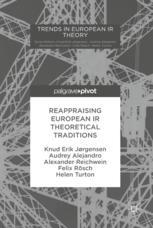

Most ebook files are in PDF format, so you can easily read them using various software such as Foxit Reader or directly on the Google Chrome browser.
Some ebook files are released by publishers in other formats such as .awz, .mobi, .epub, .fb2, etc. You may need to install specific software to read these formats on mobile/PC, such as Calibre.
Please read the tutorial at this link: https://ebookbell.com/faq
We offer FREE conversion to the popular formats you request; however, this may take some time. Therefore, right after payment, please email us, and we will try to provide the service as quickly as possible.
For some exceptional file formats or broken links (if any), please refrain from opening any disputes. Instead, email us first, and we will try to assist within a maximum of 6 hours.
EbookBell Team

4.1
70 reviewsThis book is about European IR theoretical traditions, their origins, and key figures. Theorizing is among the most important activities that take place within scientific disciplines. Scholars therefore routinely talk/debate about the discipline of IR and its theories, theories are often used to form the pedagogical backbone of IR and theories are also a key part of scholarly identities. Over time, theories crystalize in to schools of thought, strands of theorizing and theoretical traditions. This book and the volumes that will follow focus on the origins and trajectories of theoretical traditions, and key figures of IR thought in Europe in the 20th Century. The authors are situated in Europe, and it is thus the origins and trajectories of European theoretical traditions, its intellectual history and contemporary forms of theoretical knowledge today, that are on the agenda. In order to achieve this ambitious aim, we opt for a transnational sociological history approach, thus going beyond the national lens through which IR has been predominantly studied. The series will have an integrative function and contribute to a globalized discourse on IR as a discipline. The key benefits of this first volume is that it outlines IR theoretical traditions for the first time ever, provides a novel framework for exploring IR’s theories, and contributes to define and strengthen the European identity of IR. This book is an invaluable resource for scholars of IR.